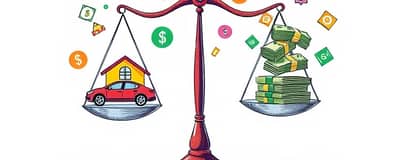When life throws an unexpected challenge—an urgent medical bill, a car breakdown, or a sudden home repair—a personal loan can be the lifeline you need. This article explores how these loans work, their costs and benefits, and how to choose the best option for your unique situation.
Understanding Personal Loans
Personal loans are unsecured debt products that offer a fixed sum of money upfront, which borrowers repay over a set term with interest.
Unlike credit cards, they provide structured repayment plan with predictable payments and typically feature fixed interest rates and monthly payments. Terms range from two to five years, and funds often arrive in your account within a day or two, making them ideal for urgent needs.
Why Personal Loans Matter in 2025
As of Q1 2025, 24.6 million Americans hold personal loans, a 4.7% increase year over year, with total debt at $253 billion. Though they represent just 1.4% of consumer debt, these loans play a crucial role when emergencies arise.
Market dynamics show fintech lenders now originate over one-third of all new personal loans, offering fast online applications and competitive rates to nonprime borrowers.
Common Uses and Borrower Profiles
Borrowers turn to personal loans for a variety of reasons, from consolidating high-interest debt to covering sudden expenses.
- Debt consolidation and credit card refinancing (48.7% of borrowers)
- Medical emergencies, car repairs, or home maintenance
- Everyday bills, wedding costs, or large appliance purchases
On average, individual loan balances sit at $11,631. Borrowers with strong credit scores often secure the best deals, while those with fair credit may face higher APRs up to 30.2% or more.
Costs and Terms to Consider
Understanding the financial implications of a personal loan is crucial. Interest rates vary widely based on creditworthiness and lender type.
Here’s a snapshot of typical rate ranges as of mid-2025:
Origination fees, often 1%–10%, add to the total cost. Interest typically begins accruing immediately upon funding, so timing and term length impact overall expenses.
Pros and Cons
Before applying, weigh the advantages against potential drawbacks.
- Fast access to cash in emergencies without collateral requirements
- Fixed monthly payments for budgeting instead of variable credit card rates
- Debt consolidation can lower overall interest costs on high-rate obligations
- Choice of loan amounts up to $100,000 to match specific needs
- High interest rates for fair or poor credit profiles
- Origination and potential prepayment fees increase costs
- No grace period—interest starts accruing immediately
- Missed payments harm credit scores and may trigger collections
Choosing the Right Option
Selecting the ideal personal loan involves research and careful comparison.
- Assess your credit score and seek prequalification offers
- Compare APRs, origination fees, and repayment terms
- Consider credit unions for lower rates and fewer fees if you qualify
- Review fintech options for fast online applications and flexible criteria
Tips for Responsible Borrowing
Borrow wisely to ensure a loan becomes a solution, not a burden.
First, calculate a monthly budget that accommodates the new payment without stretching finances too thin. Next, choose the shortest term you can comfortably afford to minimize interest costs. Third, avoid tying loan funds to nonessential expenses—reserve these loans for genuine emergencies or strategic debt consolidation.
When Alternatives Make Sense
In some scenarios, other financial tools may outperform personal loans.
If you have substantial home equity and a long-term project, a HELOC could offer lower rates. For small one-off purchases or very short-term needs, a credit card with an introductory APR promotional offer might suffice. Always compare total costs, risks, and repayment flexibility before deciding.
Conclusion
Personal loans can transform an urgent financial setback into a manageable payment plan, offering peace of mind during unexpected crises. By understanding costs, comparing offers, and borrowing responsibly, you can turn surprise expenses into structured, predictable commitments.
Armed with knowledge of rates, fees, and lender differences, you’re ready to navigate the personal loan market confidently and secure the support you need when life’s emergencies arise.














